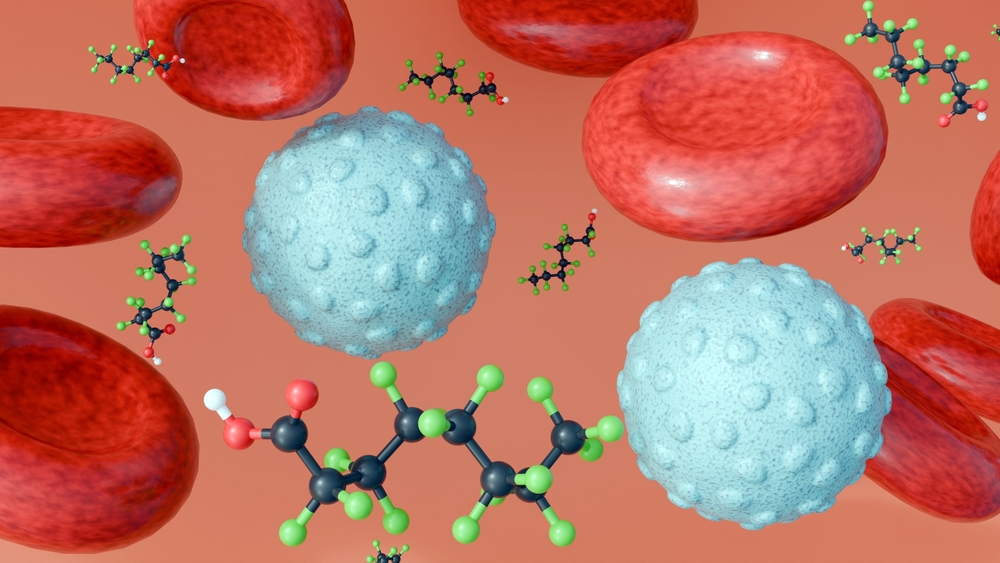A new study from North Carolina State University found high levels of short-chain PFAS in blood samples taken from residents of Wilmington, North Carolina, between 2010 and 2016.
Two very short-chain PFAS, perfluoromethoxyacetic acid (PFMOAA) and trifluoroacetic acid (TFA), were detected at high levels in nearly all samples. By contrast, GenX, the chemical that sparked public concern about PFAS in the Cape Fear River Basin, was detected in 20% of the samples.
This study adds to the body of evidence that short-chain PFAS can accumulate in the human body.
Short-chain PFAS in human blood are not well understood
Very short-chain PFAS, such as PFMOAA and TFA, have not been well studied in humans for two reasons. One is that they were not thought to bioaccumulate due to their chemical structure, and until recently there were no analytical methods to reliably detect them in the blood.
“By developing analytical methods for very short-chain PFAS, researchers discovered that these compounds are the predominant PFAS in environmental matrices, including water and human blood,” explained Detlef Knappe, professor of civil, construction, and environmental engineering at North Carolina State University and co-author of the study.
“Given the long history of PFAS exposure in Wilmington, we wanted to look for these compounds in residents’ historical water and blood samples.”
In 2016, researchers from the state of North Carolina and the U.S. Environmental Protection Agency published a study highlighting high concentrations of several PFAS, including GenX, in the drinking water of Wilmington residents.
The Fayetteville Plant, an upstream chemical facility, had been releasing PFAS into the Cape Fear River, the city’s main drinking water source, since 1980. Since 2017, the chemical manufacturer has been required to control PFAS emissions into rivers and the air.
High concentrations of PFAS in drinking water may be behind human exposure
For the new study, researchers analyzed 56 PFASs in Cape Fear River water samples collected in 2017 and PFASs in 119 adult serum samples from the UNC Biobank collected between 2010 and 2016. The serum samples were anonymized and were all collected from residents of Wilmington and the surrounding area.
The results were amazing. In serum, 34 of the 56 PFAS were detected in at least one serum sample. Five PFAS accounted for 85% of the total found in the samples. PFMOAA had the highest median concentration at 42 nanograms per milliliter (ng/mL), accounting for 42% of the total, followed by TFA (17 ng/mL), PFOS (14 ng/mL), PFOA (6.2 ng/mL), and PFPrA (5.4 ng/mL).
Additionally, TFA was found to make up 70% of the total PFAS in water samples from 2017, with a concentration of 110,000 nanograms per liter (ng/L). The concentration of PFMOAA was 38,000 ng/L.
Although TFA has a variety of sources, including fluorinated refrigerants, the publication emphasizes that the Fayetteville plant is the primary source of both TFA and PFMOAA in the lower Cape Fear River.
“For reference, European guidelines recommend a TFA concentration of 2200 ng/L in drinking water. Our samples contained concentrations more than 50 times that,” Knappe said.
Further research is needed on human exposure to short-chain PFAS
Jane Hoppin, professor of biological sciences and principal investigator of the GenX exposure study, commented: “The conventional wisdom is that short-chain PFAS are less of a concern because they don’t bioaccumulate, but what we’re seeing is that they can occur at high levels in humans.
“These results demonstrate the need to begin considering ways to study the effects of PFAS, particularly TFA and PFMOAA, on humans.”
Another problem is the limited human health data available for these chemicals. Most chemicals in the PFAS class affect the liver and immune system, but in many cases this research is still in its early stages.
Next steps in this study will include analysis of TFA and PFMOAA levels in samples from the GenX exposure study.
Hoppin concluded that “ascertaining current levels will help determine how these chemicals accumulate in the body and what the health effects are.”
Source link

